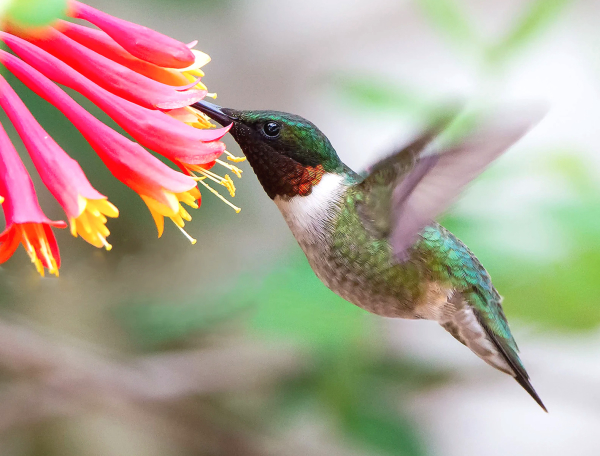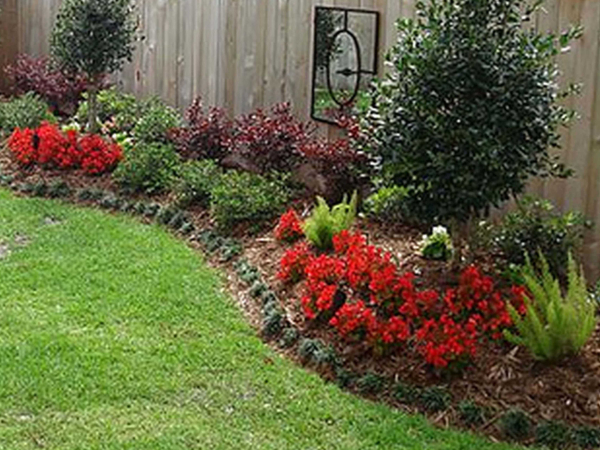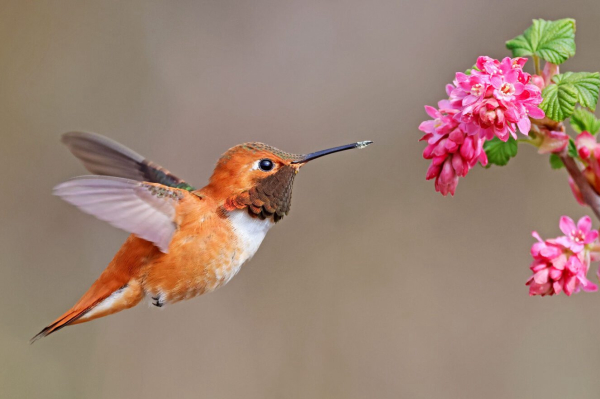Gardening for the Birds



Just as our gardening and landscaping beautifies our yard and makes it more attractive for our family, neighbors, visitors, and others, we can make our yards more attractive for birds at the same time.
While a feeding station and birdbath may be the focus of bird activity in your yard, gardens and landscaping for birds add to the importance of an area’s green space while creating our personal addition to providing habitat for birds. Consider it your own contribution to a growing backyard conservation movement that benefits some of our favorite songbirds, flycatchers, hummingbirds, and more.
As you know, little things add up, and when it comes to gardening and landscaping our properties, sometimes little areas expand into growing, evolving, ever-more attractive areas of interest, for us and for birds. For this article, let’s focus on what will attract and benefit interesting birds, while helping to beautify and culture our property at the same time. Let’s start small and see where that takes us: In the midst of or on the edge of the mowed green grass that dominates so many urban and suburban yards, consider cutting out an oval or triangle of grass for a new flower garden – that sounds like fun from the start.
To begin with, keep the sun and shade properties of a given location in mind, including how the sun creates light and shade during daylight hours. That may have a lot to do with where you choose to create a new garden plot, although you can also select plants that will prosper best within the daily sunlight coverage wherever you choose to begin a new garden area. Also keep in mind that there are 2 primary types of flowering plants – annuals and perennials. Both types make valuable additions to any yard, but while annuals live for less than one year, perennials are a long-term option because they live for more than 2 years.
Visualizing & Planning
We like to start by imagining how a new garden plot might look when it’s done. The added colors, leafy textures, the varied elevations of plants with smaller flowering plants in the front and progressively taller ones in the middle, sides, or back of the new garden space. With birds in mind, flowers and hummingbirds go hand in hand, so as you plan the kinds and colors of flowers you wish to plant, you will want to have some percentage of the plants devoted to providing nectar for hummingbirds.
That’s easy, and the choices are pretty obvious; start with plants that produce red, pink, or red-orange tubular flowers, which include flowering red trumpet vines, red salvia, red cardinal flower, bee balm, honeysuckle, lupine, flowering tobacco, and more. You can double-check what flowering plants attract hummingbirds in your area from a people at a local greenhouse, your local or state Audubon chapter, a wild birds store, or other birders. Watch for the kinds of flowers you see hummingbirds visiting during walks in your neighborhood too.
At this point in the season it’s probably too late to plant seeds if you live beyond the Sunbelt, but wherever you live, this is prime time to visit local greenhouses that are filled with a variety of established plants that are already in flower. Of course, these plants will continue to grow and expand in size, but seeing flowering plants firsthand will give you a better idea of the kinds of plants and colors of flowers you want to fill your new garden space with.
Visits to nearby greenhouses are always a highlight of planning and creating a new garden area, and each visit you make will provide new thoughts and ideas about how you can add to or improve your collection of flowering plants. As you are choosing plants, in addition to reddish tubular flowers, mix in some yellow tubular flowers and any others you may like or be attracted to, but you may wonder what is it about red flowers that attracts hummingbirds? Red flowers actually create nectar with higher sugar content, and tube-shaped flowers are most likely to produce nectar overall.
Although they don’t produce nectar, sunflowers are especially bird-friendly plants too, especially for goldfinches and some migrating native sparrows. Large sunflowers, such as black oil sunflowers are great, and smaller sunflowers should draw a lot of attention too, At the same time, sunflowers tend to convey a level of happiness when we see them, often adding smiles to our faces. Any open dirt around a new garden will also attract the attention of birds to forage, such as thrashers, towhees, and some attractive native sparrows, along with various thrushes, now or during migrations.
In addition to flowering plants, or instead of them, a new garden can be used to add a new area of bushes that produce berries that will benefit robins, bluebirds, waxwings, and other thrushes. At the same time, the addition of bushes may constitute a second garden area, or the expansion of the one you are planning for flowering plants. Berry-producing bushes are also a good option to plant as a bird-friendly border along a fence or garage. When adding a line of bordering plants, you can also create a few curves in a border area to add shape to your landscaping elements. It will add an artistic flare to your landscaping, as will adding some natural elements as accents, such as a large rock, or a pile of attractive smaller rocks; a large piece of driftwood or even an interesting looking log.
If you aren’t up for creating a new flower garden, planting individual pots – large, small, long, or tall – with flowering plants provides a variety of uses in your yard. Best of all, they are mobile; you can move them anywhere, anytime. It’s fun to position 3 different pots together with varied flowering plants in each one. The pots can be decorative or festively colored too, and you can even paint pots to make them more attractive for your personal tastes or to fit into a certain location in your yard. You can add flowering plants to anchor your feeding station too, including potted plants. There again, with potted plants, you can change the look of your feeding station simply by rearranging the pots from time to time.
Flowering plants add a lot of color and life to our yards, decks, patios, balconies, and other parts of our properties, large or small. When combined with other birdscaping elements like bushes and trees, vines, grasses, and other plants, including hardy native plants and trees, our idea of backyard bird habitat really jells into a thing of beauty of you and for birds through the seasons.
Share your backyard birding experiences and photographs with The Birding Wire at editorstbw2@gmail.com







